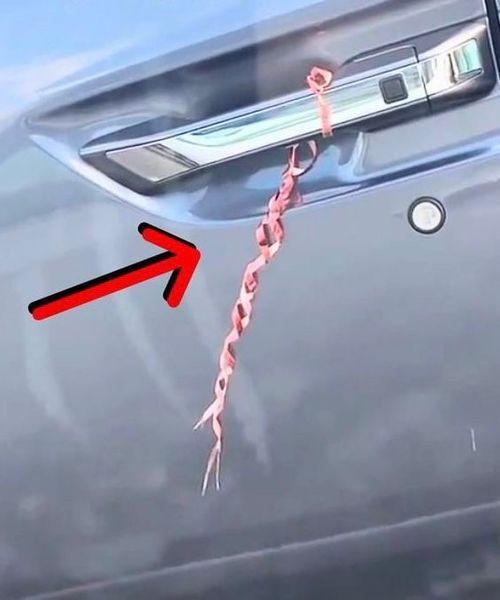In recent months, a series of viral videos have spread across social media, warning women about potential kidnapping tactics. One alarming claim is that kidnappers and traffickers are using codes like “1F,” meaning “one female,” along with water bottles or wires placed on car doors to lure women into dangerous situations.

One of these videos shows a woman filming a car in a parking lot with a wire attached to the door handle. The caption expresses her concern, asking if the situation is a joke or a real threat, fearing that someone could be kidnapped. As the camera pans, another vehicle with a similar wire wrapped around its handle comes into view, adding to the anxiety.
These videos have triggered widespread fear, with many people believing they are witnessing new tactics used by criminals. In response, a man on TikTok explained that placing a zip-tie, wire, or thread on a car door is a common tactic used to slow down the victim, giving abductors more time to strike. He refers to this as “one of the oldest tricks in the book,” further fueling public concern.
However, it’s important to take a step back and examine the facts behind these claims. The “wire trick” first gained attention through a Facebook post in 2015, originating from Canada. At the time, local police confirmed that no kidnappings had been reported as a result of this tactic. Additionally, organizations that combat human trafficking have not identified the “wire trick” as a recognized method used by traffickers.
Many experts caution against taking these social media warnings at face value. Some dismiss them as urban legends or scare tactics that play on people’s fears. They point out that most human traffickers do not rely on random attacks or tricks in parking lots. Instead, traffickers often target individuals they know or groom their victims online, where they can exploit personal information and vulnerabilities.
This isn’t to say that people should ignore potential dangers. It’s crucial to remain vigilant and aware of your surroundings. Trust your instincts, and if something feels off, don’t hesitate to seek help. But it’s also essential not to let fear dictate your actions. By staying informed and separating fact from fiction, we can all contribute to creating a safer community.
In conclusion, while social media can be a powerful tool for raising awareness, it can also spread misinformation and unnecessary panic. The best defense against real threats is to stay educated, be cautious, and rely on credible sources for information. Together, we can ensure that our communities remain safe and that we respond appropriately to genuine risks without falling prey to fear-driven myths.





